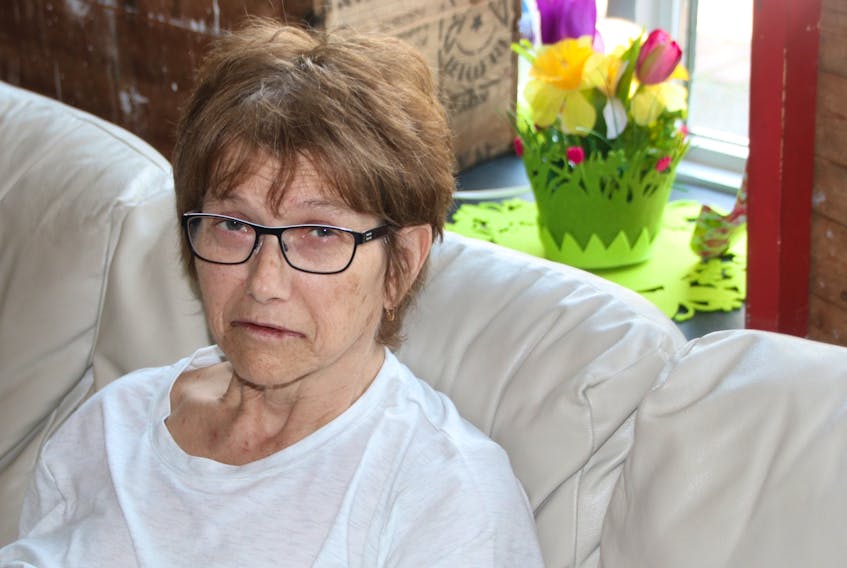TRURO, N.S. — Cindy Weatherbie was once the person who cared for others; now she’s the one in need of help.
The 59-year-old former nurse has primary biliary cholangitis and has been on a waiting list for a liver transplant for about two years.
“Some days this is heartbreaking,” she said. “I never thought this would happen. Every day is a struggle. I have to push myself to do things.”
She now finds it difficult to carry out tasks such as reading a paper or washing dishes. She’s unsteady when she walks – falling once, and breaking her arm – her speech is sluggish, her eyes and skin are dry and itchy, and she has swollen feet and ankles.
“The itchiness just drives me right up the wall,” she said. “I have bad pains in the liver, diarrhea and there are lots of things I can’t eat."
Weatherbie takes more than a dozen medications and is grateful for the friends who’ve been by her side to help. But she knows what she really needs is a new liver.
During her nursing career, she’s seen many cases where donor organs could save lives. She's also seen opportunities lost, where lives could have been saved.
“There’s a big need for donors,” she said. “The big thing is the need for communication with the family and patient.”
Dr. Stephen Beed, medical advisor with the Legacy of Life Nova Scotia Organ and Tissue Donation Program, feels people need to be more aware of the need for organs and tissues.
“One major problem is the health-care system doesn’t think of donations as often as it should,” he said. “Health-care providers may not recognize someone as a potential donor and families don’t always know what loved ones want.”
He noted many people die while on wait lists and others are removed from lists because they’ve become too ill to survive a transplant.
Because dialysis can keep people alive for years, about 80 per cent on the list are waiting for kidneys. The wait list for livers, lungs and hearts is shorter because people don’t survive as long.
“A successful transplant is remarkable,” said Beed. “A person can be near death and hours later they’re dramatically better.
“I’ve often heard people say things like they’d love to be an organ donor, but they have diabetes. You can still be a donor. Some people think they’re too old, but we’ve had people in their eighties who’ve donated livers. There was a 78-year-old competitive athlete who donated lungs and liver.
“A person who helped others in life often wants to help in death and knowing your loved one helped someone who was going to die is very comforting. In the middle of something bad, there was something good. We have to offer optimal end-of-life care and giving this opportunity is part of it.”
He said it’s important for people to talk to their families about organ donation because at times of stress it’s more difficult to make decisions.
“I’m used to caring for others,” said Weatherbie. “Patients were my life. I had patients that came back and thanked me. There are a lot of special memories. I’d just like to be able to do the things I used to, again.”
-
The Human Organ and Tissue Donation Act
The Human Organ and Tissue Donation Act will make it possible for all Nova Scotians to donate their organs and tissue, unless they opt out.
People can opt out at any time and families will continue to be consulted about their loved ones’ wishes regarding donation.
The legislation is expected to take effect in mid- to late-2020.
More information on organ donation can be found on the Legacy of Life website at http://www.nshealth.ca/legacy-life?
-
Primary biliary cholangitis
With this condition, the bile ducts in the liver are destroyed.
It usually develops slowly and is believed to be caused by a combination of genetic and environmental factors.
Most of the people affected are women between the ages of 30 and 60.
Common early signs are fatigue, itchy skin, and dry eyes and mouth.









